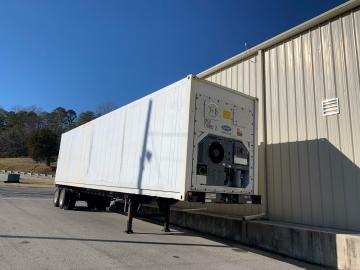
Filter News
Area of Research
- Advanced Manufacturing (6)
- Biological Systems (3)
- Biology and Environment (55)
- Biology and Soft Matter (2)
- Building Technologies (4)
- Chemical and Engineering Materials (2)
- Chemistry and Physics at Interfaces (6)
- Computational Biology (1)
- Computational Chemistry (1)
- Computer Science (1)
- Electricity and Smart Grid (1)
- Energy Frontier Research Centers (7)
- Energy Science (95)
- Functional Materials for Energy (8)
- Fusion and Fission (17)
- Fusion Energy (3)
- Geographic Information Science and Technology (2)
- Isotope Development and Production (1)
- Isotopes (5)
- Materials (85)
- Materials for Computing (6)
- Materials Synthesis from Atoms to Systems (5)
- Materials Under Extremes (6)
- National Security (29)
- Neutron Data Analysis and Visualization (2)
- Neutron Science (28)
- Nuclear Science and Technology (7)
- Quantum Condensed Matter (2)
- Reactor Technology (1)
- Supercomputing (66)
- Transportation Systems (2)
News Type
Date
News Topics
- 3-D Printing/Advanced Manufacturing (43)
- Advanced Reactors (9)
- Artificial Intelligence (59)
- Big Data (37)
- Bioenergy (35)
- Biology (50)
- Biomedical (19)
- Biotechnology (13)
- Buildings (45)
- Chemical Sciences (45)
- Clean Water (11)
- Composites (14)
- Computer Science (66)
- Coronavirus (9)
- Critical Materials (12)
- Cybersecurity (7)
- Education (2)
- Element Discovery (1)
- Emergency (3)
- Energy Storage (40)
- Environment (74)
- Exascale Computing (33)
- Fossil Energy (5)
- Frontier (31)
- Fusion (20)
- Grid (29)
- High-Performance Computing (61)
- Hydropower (9)
- Irradiation (1)
- Isotopes (21)
- ITER (4)
- Machine Learning (33)
- Materials (61)
- Materials Science (44)
- Mathematics (7)
- Mercury (1)
- Microelectronics (2)
- Microscopy (17)
- Molten Salt (1)
- Nanotechnology (11)
- National Security (51)
- Neutron Science (35)
- Nuclear Energy (28)
- Partnerships (37)
- Physics (19)
- Polymers (10)
- Quantum Computing (27)
- Quantum Science (31)
- Security (12)
- Simulation (30)
- Space Exploration (9)
- Statistics (3)
- Summit (21)
- Transportation (25)
Media Contacts

A team of scientists led by the Department of Energy’s Oak Ridge National Laboratory and the Georgia Institute of Technology is using supercomputing and revolutionary deep learning tools to predict the structures and roles of thousands of proteins with unknown functions.

Neuromorphic devices — which emulate the decision-making processes of the human brain — show great promise for solving pressing scientific problems, but building physical systems to realize this potential presents researchers with a significant

Oak Ridge National Laboratory researchers have retrofitted a commercial refrigeration container designed to ensure COVID-19 vaccines remain at ultra-low temperatures during long transport and while locally stored.

A research team from Oak Ridge National Laboratory has identified and improved the usability of data that can help accelerate innovation for the growing bioeconomy.

To advance sensor technologies, Oak Ridge National Laboratory researchers studied piezoelectric materials, which convert mechanical stress into electrical energy, to see how they could handle bombardment with energetic neutrons.


With the production of 50 grams of plutonium-238, researchers at the Department of Energy’s Oak Ridge National Laboratory have restored a U.S. capability dormant for nearly 30 years and set the course to provide power for NASA and other missions.


Bruce Lester has had a lot of jobs: fisherman, horse trainer, “professional stair builder.” He last worked for a real estate company, surveying land using geographic software. “When the bottom fell out of the construction industry and the company downsized, I got laid off,”

Sheng Dai of the Department of Energy’s Oak Ridge National Laboratory has been named to a list of the most highly cited researchers in the world. Thomson Reuters Highly Cited Researchers is an annual list that recognizes some of the world’s leading


